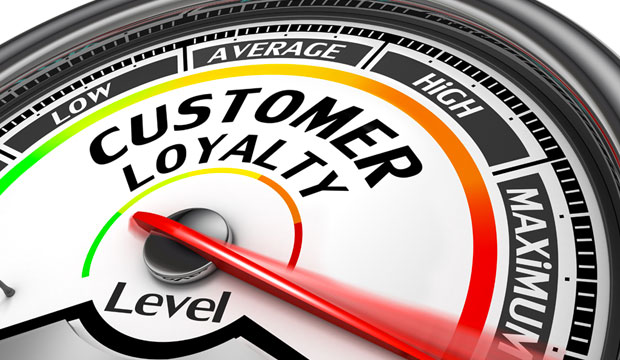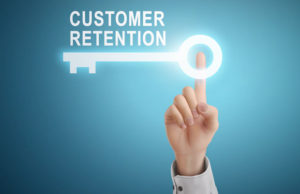Customer churn is costing mid-market companies an average of $5.5 million per year. Retailers need to avoid the costly mistakes that result in such disastrous churn, according to a recent CRM and Sales Impact Report from SugarCRM.
This presents a clamorous alarm to marketers.
In a marketing sense, churn is the measure of how many customers stop using a product. A contributing factor to the increasing churn rate this year, the report claims, stems from sales teams failing to work effectively in CRM platforms.
CRM is big business. The $35 billion CRM market provides the foundational technology for customer engagement. So the quality of support — or lack of it — that sales teams get from CRM vendors is crucial.
The SugarCRM report shares insights from 1,000 sales professionals on what is driving (or stalling) revenue and customer engagement. Half of the companies surveyed said they cannot access customer data across marketing, sales, and service systems. Nearly one-third say their customer data is incomplete, out of date, or inaccurate.
That $5.5 million annual loss to churning customers may sound like a lot, according to Dutta Satadip, former Pinterest exec and first chief customer officer at ActiveCampaign. His company provides a customer experience automation (CXA) platform with over 130,000 customers across 170 countries.
“But customer churn has been an ongoing problem for companies of all sizes. Many people think that technology is the answer to reducing customer churn. I believe that customers churn because they do not find value in the product,” he told CRM Buyer.
Report Revelations
The SugarCRM report levels some bad news for marketers who expect solid returns on their budgetary investments. For instance, 58 percent of the respondents cite inadequate training and help. They also targeted a lack of sufficient skills to customize the CRM tools.
A slightly smaller majority, but still more than half (53 percent) of respondents, reported that the administrative burdens of their CRM platform cause friction for their sales team.
A lack of time with hands-on selling also was part of the picture. The average sales rep only spends 54 percent of his or her time actually selling, the report noted.
Smart Money Has Eyes on AI
Without access to the right data, companies cannot keep customers happy or calibrate the customer experience to minimize churn, according to SugarCRM.New artificial intelligence features are poised to move onto platforms well beyond the chatbot.
Slightly more than half (56 percent) of respondents said their customer churn has increased in the last 12 months. The result is costing them big time.
Some 57 percent of respondents revealed that they have trouble predicting when customers will churn. Even in hindsight, 48 percent of those surveyed say they do not know why customers have churned.
“That tells you over half of the businesses do not know their customers well enough. Knowing your customers inside and out starts from the time someone Googles you and reaches your company website. It continues via your sales team and then continues indefinitely with your customer service team,” said Satadip.
The lack of a high-definition customer view may be why most respondents (88 percent) said they expect to increase their use of AI to augment more of their existing CRM processes within the next 24 months.
Companies that significantly improve the accuracy and completeness of their customer data stand to gain better business outcomes, the report predicted.
Fix or Fail
The combination of digital transformation, heightened competition, and customer expectations present marketers with a critical choice. The conclusion of the SugarCRM report is defining — fix your CRM deficiencies or risk losing market share.
One observation for how to reduce churn rates, according to ActiveCampaign’s Satadip, is to go upstream. You do that by understanding your customers’ goals, collecting the signals about how they realize those goals, and use these signals to engage customers effectively.
“Ultimately, if customers see good outcomes that they can accomplish with the least amount of effort, they will stay with your product. Having the right tools in place can give you insight into the customer by collecting the signals. The tools can use the data collected and automate parts of the customer journey to engage customers,” he explained.
The bottom line is that you need to understand and execute the principles of customer experience at a deep level to create long-lasting customer relationships, he added. As a customer experience leader for many years, Satadip found there are three principles of a customer experience strategy that can minimize churn.
When customer expectations, engagement, and empowerment are in balance and executed correctly, any company — regardless of size — can create an exceptional customer experience that will in turn directly support retention efforts, he noted.
Walkthrough Marketing
Another strategy that might hope marketers and merchants get better results from their advertising and combat churn are the new features that Zenreach recently put into play. The company produces marketing software that allows brick-and-mortar business customers to access public Wi-Fi.
One of the company’s approaches is called walkthrough marketing. The new features the company just rolled out allow its partners to measure the full impact of their digital campaigns by tying in-store walkthroughs and purchases directly to ad exposure, explained John Kelly, CEO of Zenreach.
“By utilizing our new technology, retailers will no longer have to guess whether or not the valuable ad dollars they are spending are having a positive impact on their business and bottom line. This is the future of omnichannel marketing,” he told CRM Buyer.
Post-Purchase Personalization
Many companies tend to focus on the acquisition phase of the customer lifecycle. But customers spend most of their time out of the acquisition phase. They are just being a customer and using the product, observed Satadip.
“The brands that stand out are those that put just as much energy into the post-purchase phase and continue extreme personalization efforts to keep their customers engaged and feeling valued,” he offered.
If organizations can optimize the post-purchase segment of the customer lifecycle, they are not only able to differentiate themselves in the marketplace. They are also well-positioned to drive customer lifetime value and turn first-time customers into brand advocates, he explained.
B2B CX Self-Assessment
Forrester predicts at least 80 percent of the B2B sales cycle will happen in digital settings moving forward. This means that arguably the top areas of focus for B2B companies are attracting, retaining, and building brand loyalty among customers, according to Satadip.
“The best way for brands to accomplish these goals is to build stronger customer experiences,” he suggested.
To achieve that goal, divide what makes a strong customer experience into three separate buckets. That can be a helpful way of evaluating how well you support your customers and where there are opportunities for growth or improvement, he continued.
Satadip recommended asking yourself three questions:
1. How do you set appropriate expectations with your customers?
2. How do you drive engagement with your product or your service?
3. How do you truly empower the customers to make the best choice for their business?
“Lots of choices exist in the marketplace, and effectively answering all three of these questions can help businesses navigate the pivot in a much more constructive and stable way,” he concluded.



























































Social Media
See all Social Media